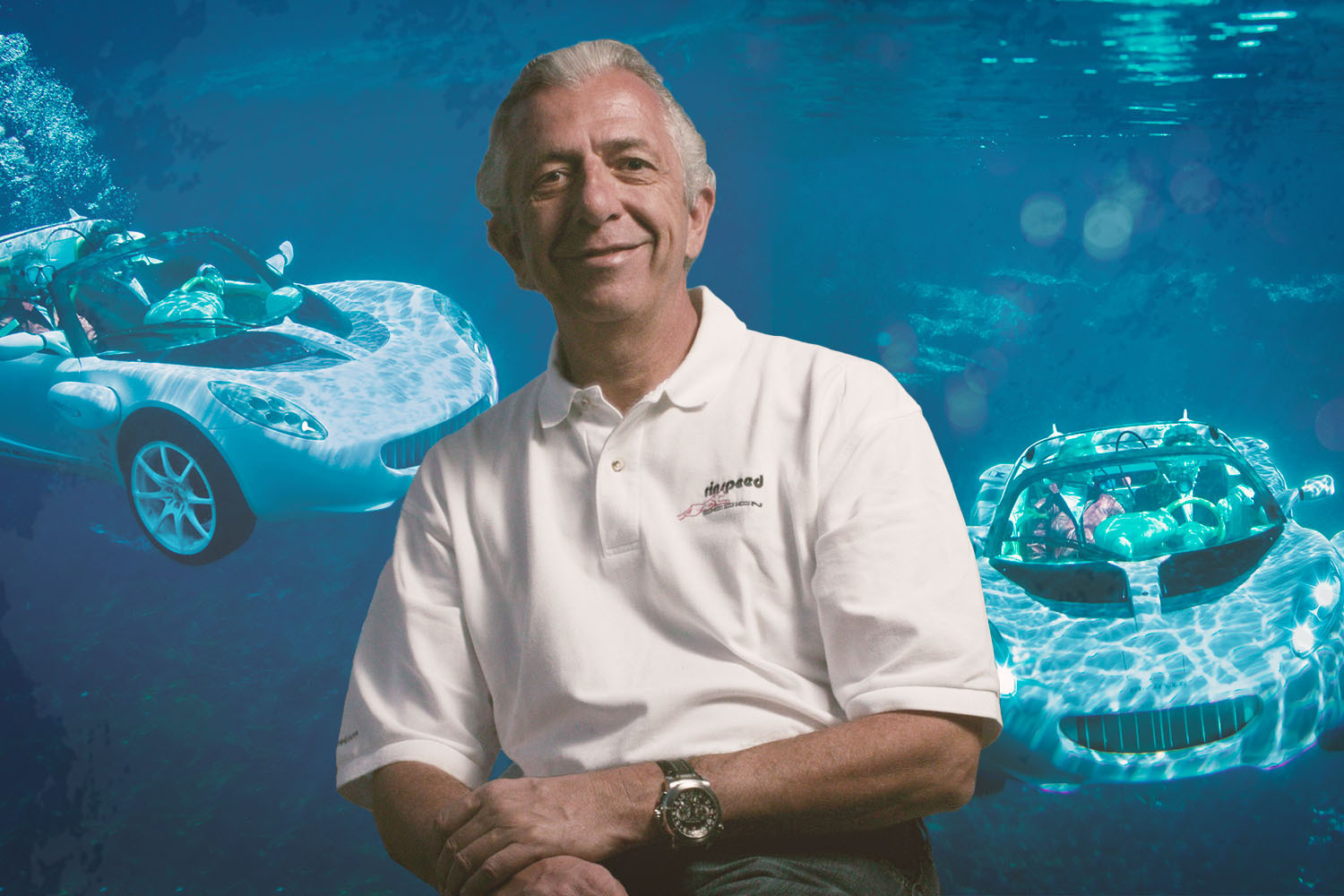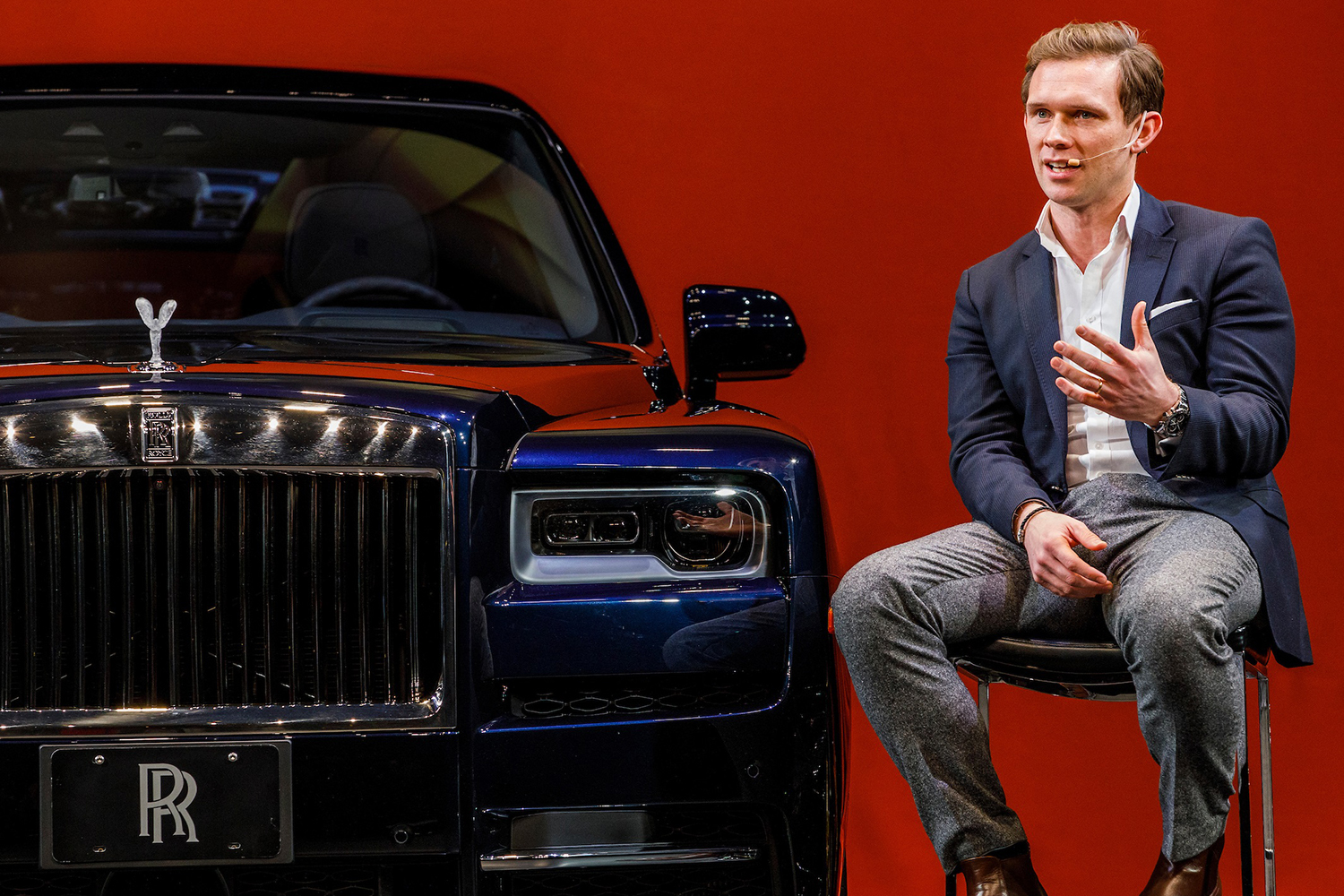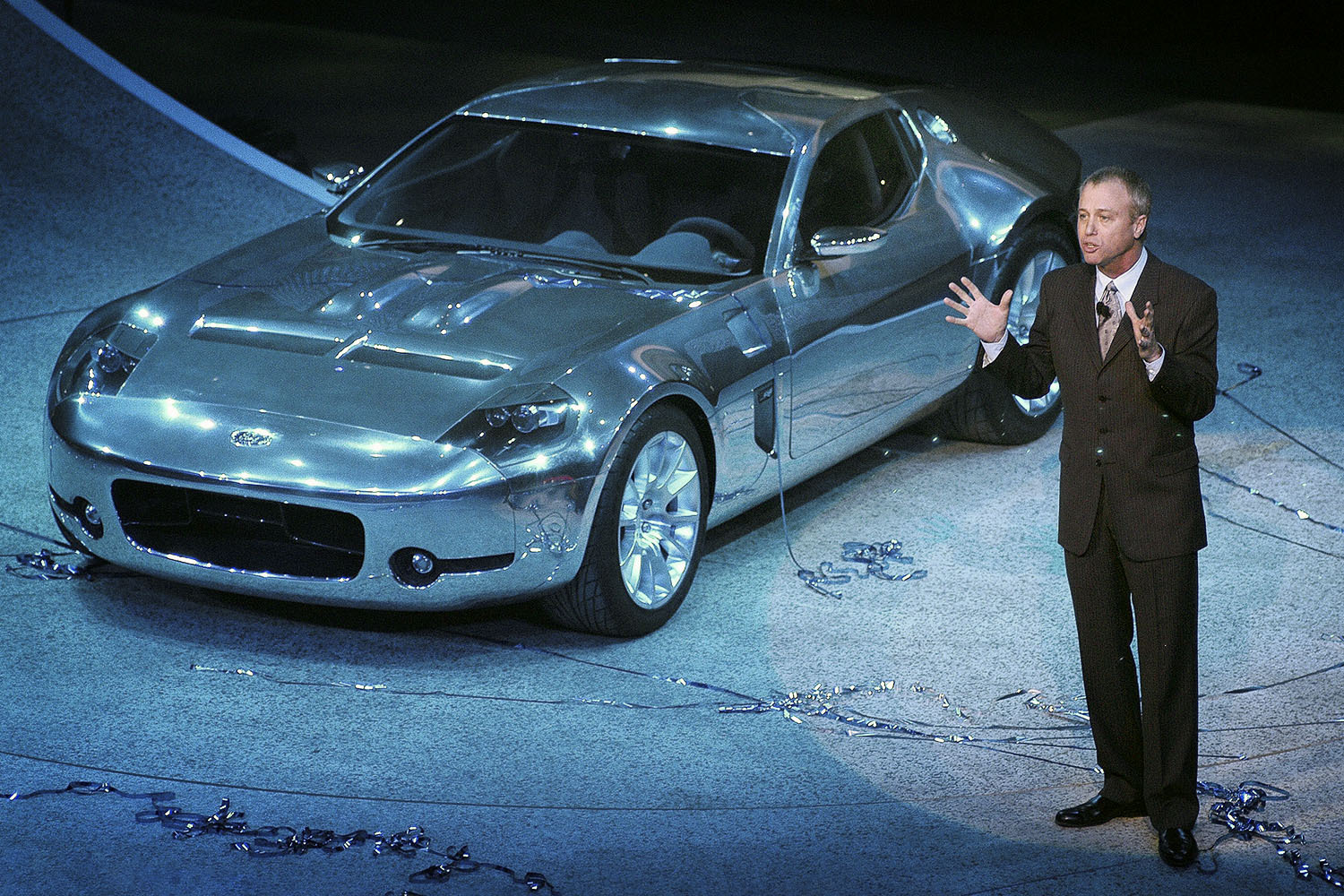Andrea Zagato was introduced to the idea of joining the family firm at an early age. Each day he was chauffeured to school in an Alfa Romeo 2.6 presidential limousine, driven by his grandfather on the way to work. He resisted at first, having every intention of becoming a veterinarian. “But curiosity more about my father [than cars] took me to the company,” Zagato tells InsideHook, “and I actually started really loving it when I realized how unique Zagato is.”
Those schooled in premium European carmakers may know the Zagato name more by default. As a coachbuilder that marked its centenary over lockdown, Zagato has lent its styling to the likes of Bugatti, Rolls-Royce, Porsche, Bentley, Jaguar and AC, and just about every other top marque you can name. The company stands alongside the likes of Pininfarina, Karmann and Bertone for its visionary ability to give already incredible sports cars, tourers and saloons an extra mark of distinction. Add a Zagato badge — even to a less glamorous Peugeot, Toyota or a dinky Fiat 500 — and you can triple the price of the vehicle.
“And I hope it does do that,” laughs Zagato, who is now finding that he can offer the same cachet boost to other products, from cameras for Leica to watches for Chopard, by adding the family name to them, too. “But the point is that we’re not competitors. We only apply our brand to the side of the car. The one on the bonnet is still very much theirs. The idea is to have teamwork and come up with something that’s a mix of your two approaches and so stronger for having both.”
The evidence? Just consider the likes of the Aston Martin DB4 GT Zagato, the Alfa Romeo TZ3 Stradale or the Giulietta Sprint Zagato. Weep with joy at the Zagato Lamborghini 5-95 or Raptor, the Lancia Hyena or Flaminia Sport Zagato, the Ferrari 575 GTZ, the BMW Zagato Coupe. Get in line for the new open-top Zagato Maserati Mostro Barchetta. They are all on another playing field.
“Of course it sometimes happens that something doesn’t have as much ‘Zagatoness’ as we might want,” he adds. “And at other times it’s only Zagato from certain angles. Bentley, for example, told me that we should work more freely with the back of their car, because that’s typical of Zagato, and go softer on the front, because that should be more Bentley. For Zagato to come along and design something different is not difficult. The skill lies in being different but consistent with the original design.”

That Zagatoness is a rare quality, too. In contrast to rival coachbuilders, the company has never done series models, it only creates custom-made cars in very limited numbers, which means it has avoided following the trends of the times as production cars inevitably do. And, despite being an Italian company, its design ethos is more Germanic — a product, Andrea Zagato says, of being based just outside Milan, northern Italy having been more under the influence of Austria, the south under France.
“That French way of design sees the application of decoration to an industrial product. Think about a Parisian bridge and it’s all flowers and sculptural elements added to a functional bridge,” explains Zagato, who loves his history. “In Milan it’s all clean, clean, clean: Bauhaus, Ulm School, Rationalism, less is more. You don’t add anything that isn’t necessary and that’s what makes the product beautiful. It’s not just style, which ultimately is just marketing. It’s sales. It’s all about functionality and simplicity.”
That mindset also stems from the other characteristic that sets Zagato apart. Ugo Zagato, Andrea’s grandfather and the company’s founder, started his career in aircraft design and applied his knowledge of aviation’s metal construction to automobiles, bringing extreme lightness and aerodynamics. Indeed, the company has continued to innovate by bringing tech over from aviation into the automotive sphere: using glues to affix the subframe to the skin; the first entirely carbon fiber shell; the first car completely developed using computer-aided design and manufacturing (CAD/CAM) systems, its Alfa Romeo SZ of 1989. Zagato was also experimenting with making all-electric cars 50 years ago with its quirky Zele model.
“It’s funny,” says Zagato, “but Italians have a more horizontal philosophy when it comes to design innovation. We make something remarkable and the next time we completely forget we’ve done that and try to do something else remarkable but completely different. I think that’s why Italy has never had the same success in design as Japan and Germany, because their design philosophy is vertical — everything builds on what has come before. I really should try to be more German. I do at least have a Japanese chief designer [in Norihiko Harada]. He’s spent more time with me than my wife.”
A few decades ago Zagato considered manufacturing cars itself too, but Andrea’s father, Elio, faced with the economies of scale that more global competitors were achieving by massively ramping up production, made the tough decision to drop that side of the business. The other Italian coachbuilders soon followed suit. But that has allowed the company, under Andrea, to focus on design in a way that, he hopes, will give the company the longevity to see another hundred years. Engine design is already going through a radical overhaul with electrification, but people will, he reckons, still want beautiful cars.
“You can change the inside of a phone from an analog to an electronic system,” he says, “but someone still has to design the exterior, and the exterior can be the same in both devices.”

Demand for Zagato’s vision is on the up too, despite, Andrea says, the ever more complex and enormous automotive groups lacking the spirit of instinctive decision-making that was more common in his father’s time.
The boost to the family firm has come, he adds, because competition is so intense that each big car brand’s in-house design department is invariably concerned with maintaining market share rather than building it, and that requires drilling down on that brand’s signatures. There isn’t the scope to think differently, as Zagato might for them. Standardized production is also leading the big names to worry that they’re all leaning towards a certain sameness.
But the company’s relevance also comes down to the fact that “Zagatoness” is eminently applicable beyond sports cars — it can be injected in the likes of trains and even tractors, too. Sure, it might not be Pebble Beach material, but don’t be sniffy about tractors, Zagato says.
“A top-end tractor is actually a super luxurious vehicle these days, and it has to be, what with the driver in that cab for maybe 10 hours at a time, every day, in the sun,” he explains. “That necessarily makes the design highly ergonomic, and why the cab tends to cost a fortune. Comfort and convenience are stressed much more than they would be in an actual luxury car.”
Of course, his moments of pride are still more likely to be had on the autostrada or Autobahn rather than in the middle of a muddy field.
“A Zagato design has to work for everyone, not least because we’re becoming something of a brand in our own right,” says Zagato. “And this is happening despite the fact that, in the bigger scheme of the automobile industry, our badge really doesn’t appear on many cars, and then it’s usually on cars which I most often see in a museum or on a Concours d’Elegance. But, sure, it’s a happy moment when I occasionally see one on the road. It’s like being an artist. You might not actually make many paintings, but you can still be recognized all over the world.”
This article was featured in the InsideHook newsletter. Sign up now.























